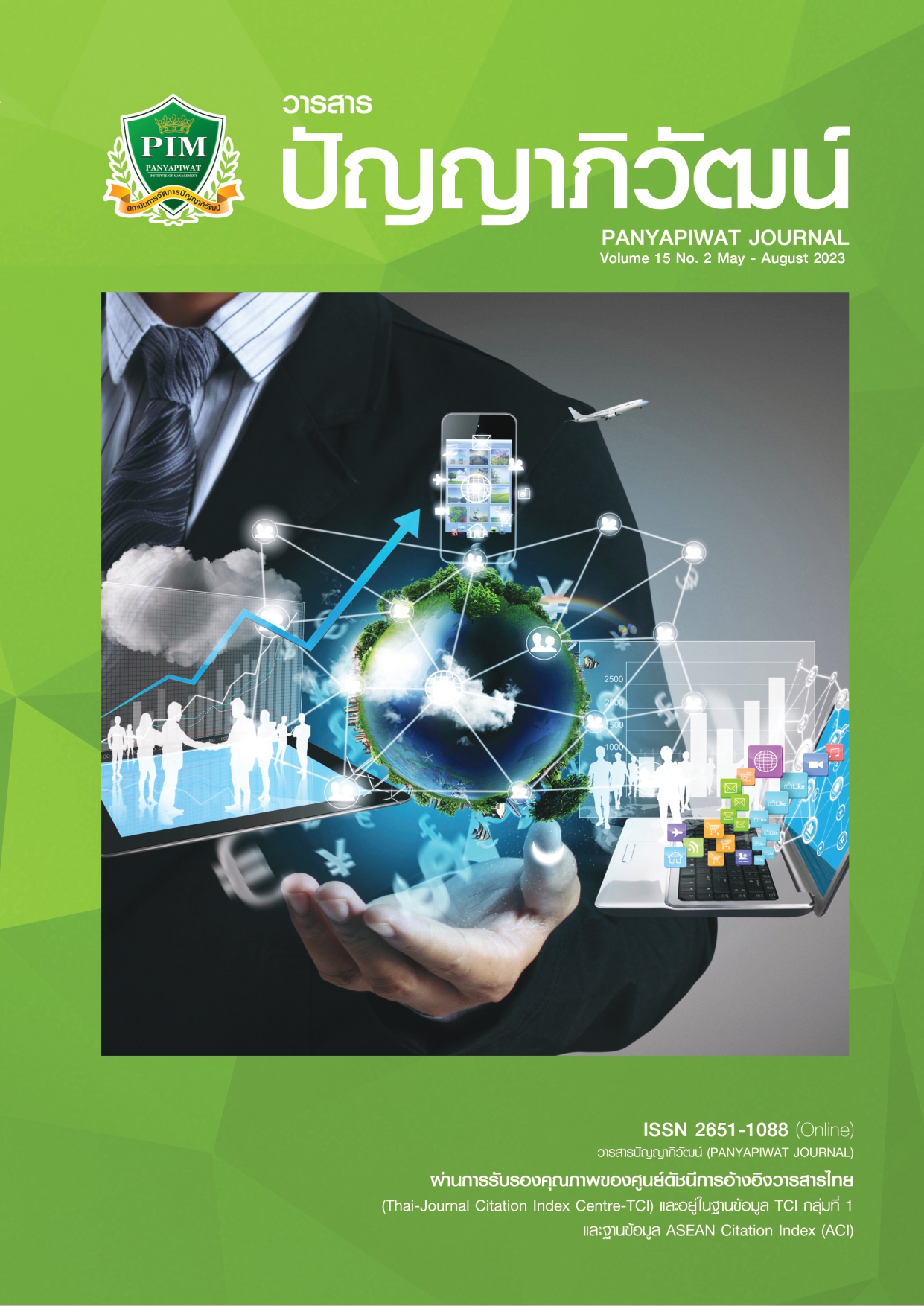การสื่อสารสุขภาพชุมชน กรณีศึกษาโรงพยาบาลส่งเสริมสุขภาพตำบลจังหวัดสุพรรณบุรี อุบลราชธานี และกาฬสินธุ์
Main Article Content
บทคัดย่อ
การศึกษาการสื่อสารสุขภาพชุมชน กรณีศึกษาโรงพยาบาลส่งเสริมสุขภาพตำบล (รพ.สต.) จังหวัดสุพรรณบุรี อุบลราชธานี และกาฬสินธุ์ มุ่งพัฒนาการสื่อสารสุขภาพแบบมีส่วนร่วมของ รพ.สต. ใน 3 ชุมชน เป็นการวิจัยเชิงปฏิบัติการแบบมีส่วนร่วม คัดเลือกกลุ่มตัวอย่างแบบเจาะจง (Purposive Sampling) จากเจ้าหน้าที่ รพ.สต. อสม. ผู้นำชุมชน และชาวบ้าน ชุมชนละ 30 คน เพื่อตอบแบบสำรวจในกรณีที่สามารถเข้าถึงอินเทอร์เน็ตได้ หรือให้สัมภาษณ์ในกรณีที่ไม่สะดวกในการใช้อินเทอร์เน็ต ตามกรอบกลยุทธ์การสื่อสาร ได้แก่ ด้านผู้ส่งสาร ด้านเนื้อหาสาร และรูปแบบสาร ด้านสื่อและช่องทางการสื่อสาร ด้านผู้รับสาร และด้านบริบทการสื่อสาร สังคม และวัฒนธรรม โดยให้ข้อมูลตามสภาพจริง เน้นการสื่อสารประเด็นโควิด 19 ของ รพ.สต. จากนั้นร่วมกันออกแบบกลยุทธ์การสื่อสาร โดยทีมผู้วิจัยรับผิดชอบในการผลิตเนื้อหา โดยใช้ระยะเวลา 6 เดือน ระหว่างเดือนตุลาคม 2564 ถึงเดือนมีนาคม 2565 การประเมินผลการสื่อสารใช้การสนทนากลุ่มกลยุทธ์การสื่อสารที่ชุมชนมีส่วนร่วมในการวางแผนมีดังนี้
ผู้ส่งสารกำหนดแหล่งที่มาของข่าวสารสุขภาพจากกรมอนามัย ศูนย์ข้อมูลโควิด 19 กรมสุขภาพจิต สำนักงานกองทุนสนับสนุนการสร้างเสริมสุขภาพ (สสส.) การสัมภาษณ์แพทย์ผู้เชี่ยวชาญประจำรพ.สต. แพทย์แผนไทยประจำหมู่บ้าน
ด้านผู้รับสาร แบ่งตามช่วงวัยและเพศ ในกลุ่มวัยทำางานแบ่งกลุ่มย่อยตามอาชีพ และกลุ่มผู้สูงอายุมีการ แบ่งกลุ่มย่อยเป็นผู้สูงอายุที่ไม่มีโรคประจำตัวและกลุ่มผู้สูงอายุที่มีโรคประจำตัว นอกจากนี้ยังคำนึงถึงผู้รับสารที่เข้าถึงอินเทอร์เน็ตและกลุ่มที่เข้าไม่ถึงหรือไม่ค่อยเปิดรับข่าวสารผ่านอินเทอร์เน็ต
ด้านเนื้อหาและรูปแบบสาร เน้นเรื่องเกี่ยวกับโควิด 19 โรคประจำฤดูกาล โรคตามวัย โรคที่เป็นกันมากในชุมชน โดยมีรูปแบบสารหลากหลาย ได้แก่ ข้อความหรือบทความ ลิงก์ วิดีโอ ภาพ กราฟิก การ์ตูน เสียงตามสาย สื่อวิทยุชุมชน และสื่อบุคคล โดยผลิตตามความต้องการของผู้รับสารแต่ละกลุ่ม และตามวัตถุประสงค์ของการสื่อสาร
ด้านสื่อและช่องทางการสื่อสาร ข้อมูลข่าวสารทุกประเภทจะผลิตในรูปแบบบทความ กราฟิกและอินโฟกราฟิก คลิปวิดีโอ อัลบั้มภาพ รวมถึงลิงก์ข่าวประชาสัมพันธ์ โดยจะเผยแพร่ลำดับแรกผ่านเฟสบุ๊ก รพ.สต. ผ่านไลน์ และเสียงตามสายหรือสื่อวิทยุกระจายเสียง จากนั้น อสม. ลงพื้นที่ทำความเข้าใจสารและชักชวน ให้ลงทะเบียนฉีดวัคซีนป้องกันโควิด 19 ผ่าน QR Code รพ.สต. ข้อมูลข่าวสารทุกเรื่องจะถูกคัดเลือกมาอ่านออกเสียงตามสายและสื่อวิทยุชุมชนในช่วงเช้าทุกวัน เพื่อให้กลุ่มเป้าหมายที่ไม่ค่อยใช้อินเทอร์เน็ต หรือผู้สูงอายุที่ไม่สะดวกในการอ่านข้อมูล ได้รับฟังข่าวสารสุขภาพได้เช่นเดียวกับกลุ่มอื่น
การดำเนินการตามกลยุทธ์การสื่อสารที่ชุมชนมีส่วนร่วมในการกำหนด ทำให้ผลของการสื่อสารในระยะเวลา 6 เดือน มีประสิทธิผล โดยมียอดคนในชุมชนไปฉีดวัคซีนร้อยละ 96 และมียอดผู้เข้าถึงเฟสบุ๊ก รพ.สต. มากขึ้น ผลการสัมภาษณ์ผู้แทนแต่ละกลุ่มตัวอย่างพบว่า การใช้สื่อออนไลน์ สื่อดั้งเดิมและสื่อบุคคล ทำให้ชาวบ้านมีความรู้ความเข้าใจ เกิดความเชื่อใจและเกิดพฤติกรรมตามวัตถุประสงค์ของการสื่อสาร
Article Details

อนุญาตภายใต้เงื่อนไข Creative Commons Attribution-NonCommercial-NoDerivatives 4.0 International License.
“ข้าพเจ้าและผู้เขียนร่วม (ถ้ามี) ขอรับรองว่า บทความที่เสนอมานี้ยังไม่เคยได้รับการตีพิมพ์และไม่ได้อยู่ระหว่างกระบวนการพิจารณาลงตีพิมพ์ในวารสารหรือแหล่งเผยแพร่อื่นใด ข้าพเจ้าและผู้เขียนร่วมยอมรับหลักเกณฑ์การพิจารณาต้นฉบับ ทั้งยินยอมให้กองบรรณาธิการมีสิทธิ์พิจารณาและตรวจแก้ต้นฉบับได้ตามที่เห็นสมควร พร้อมนี้ขอมอบลิขสิทธิ์บทความที่ได้รับการตีพิมพ์ให้แก่สถาบันการจัดการปัญญาภิวัฒน์หากมีการฟ้องร้องเรื่องการละเมิดลิขสิทธิ์เกี่ยวกับภาพ กราฟ ข้อความส่วนใดส่วนหนึ่งและ/หรือข้อคิดเห็นที่ปรากฏในบทความข้าพเจ้าและผู้เขียนร่วมยินยอมรับผิดชอบแต่เพียงฝ่ายเดียว”
เอกสารอ้างอิง
Anti-Fake News Center Thailand. (2020, December 4). Fake news. Don’t share. Self-check COVID-19 by holding your breath. https://www.antifakenewscenter.com/
Anti-Fake News Center Thailand. (2020, December 5). Fake news. Don’t share. Plasma drink recipe to kill COVID-19. https://www.antifakenewscenter.com/
Anti-Fake News Center Thailand. (2020, December 18). Fake news. Don’t share. Taking Basil leaves 50 grams a day to protect yourself from COVID-19. https://www.antifakenewscenter.com/
Anti-Fake News Center Thailand. (2020, December 28). Fake news. Don’t share. Clip from international source advise to drink hot water and inhale water vapor to kill COVID-19. https://www.antifakenewscenter.com/
Benjarongkij, Y. (1999). Audience analysis. T. P. Print Ltd.
Berlo, D. K. (1960). The process of communication: An introduction to theory and practice. Holt, Rinehart and Winston.
Boonchutima, S., & Khotcharee, Q. (2016). Risk communication. 21 Century Ltd.
Chuwongin, D., Molek, R., Boonprajak, K., Sombutboon, M., & Preechakoon, B. (2020). Nursing communication in disruptive medicine. The Journal of Chulabhorn Royal Academy, 2(2), 25-38.
Content Shifu. (n.d.). Content marketing. https://contentshifu.com/pillar/content-marketing
Department of Mental Health, Ministry of Public Health. (2020). 2020 Annual report. https://dmh.go.th/report/dmh/rpt_year/
Kaewthep, K. (2000). Media for community: Knowledge management. Thai Research Fund.
Maneesridej, S., & Boonchutima, S. (2016). The survey research on Thai people’s media and health information exposure. Journal of Public Relations and Advertising, 9(2), 75-86.
Nomsiri, A., & Kaewthep, K. (2010). Communication for development of health promotion networking under health education division, health support service. Journal of Communication Arts, 28(2), 44-61.
Onnark, P., & Shaw, K. (2023). Stock market news strategy, opinion, utilization, and satisfaction with eFinanceThai Facebook fanpage among generation Y and X investors. Panyapiwat Journal, 15(1), 191-208.
Pilun-owad, O. (2006). Persuasive communication (4th ed.). Chulalongkorn University Press.
Reimer, B. (1995). Youth and modern lifestyle in youth culture in late modernity. Saga. Harper and Row.
Rimal, R. N., & Lapinski, M. K. (2009). Why health communication is important in public health. http://www.who.int/buletin/volumes/87/4/08-056713/en/
Roonkaseam, N., & Pankhao, O. (2018). Communication and health development. Unit 10 in communication and development. Sukhothai Thammathirat Open University Press.
Rosenfeld, L. B., & Berko, R. M. (1990). Communicating with competency, instructor’s manual and test bank. Scott Foresman.
Shaw, K. (2019). Rap news: The adjustment of ‘news network radio’ in the digital era. Panyapiwat Journal, 11(2), 309-322.
Shaw, K. (2023). Communication strategy diagram in the improvement of communication innovation of the Media as Social School project (MASS) [Unpublished manuscript]. School of Communication Arts, Panyapiwat Institute of Management.
Shimp, T. A. (1997). Advertising, promotion and supplemental aspects of IMCs (4th ed.). The Dryden press.
Surasonthi, K. (2016). Examining communication in flood crisis for setting a tentative communication policy to deal with flood disaster in Thailand during 2013. JC Journal, 9(2), 7-23.
Tufte, T., & Mefaloputlos, P. (2009). Participatory communication: A practical guide. The World Bank.
Voracharusrungsi, A. (2013). Type of marketing content on Facebook fanpage and comsumers’ buying intention [Master’s thesis]. Chulalongkorn University.
Wattanakorn, A. (2022). Communication factors predicting disease prevention and treatment behaviors of people in the regional health promotion center 5 [Master’s thesis]. National Institute of Development Administration.
Wongkitrungruang, W., & Kularb, P. (2023). The survey of knowledge on fake news, disinformation, misinformation: Case studies of Thai health information. Thai Health Organization. https://docs.google.com/document/d/1GcLW2cNVK0zaaXlb3dhjy1Jsi68W9tsWGI-M_wdEg9E/edit?usp=sharing


